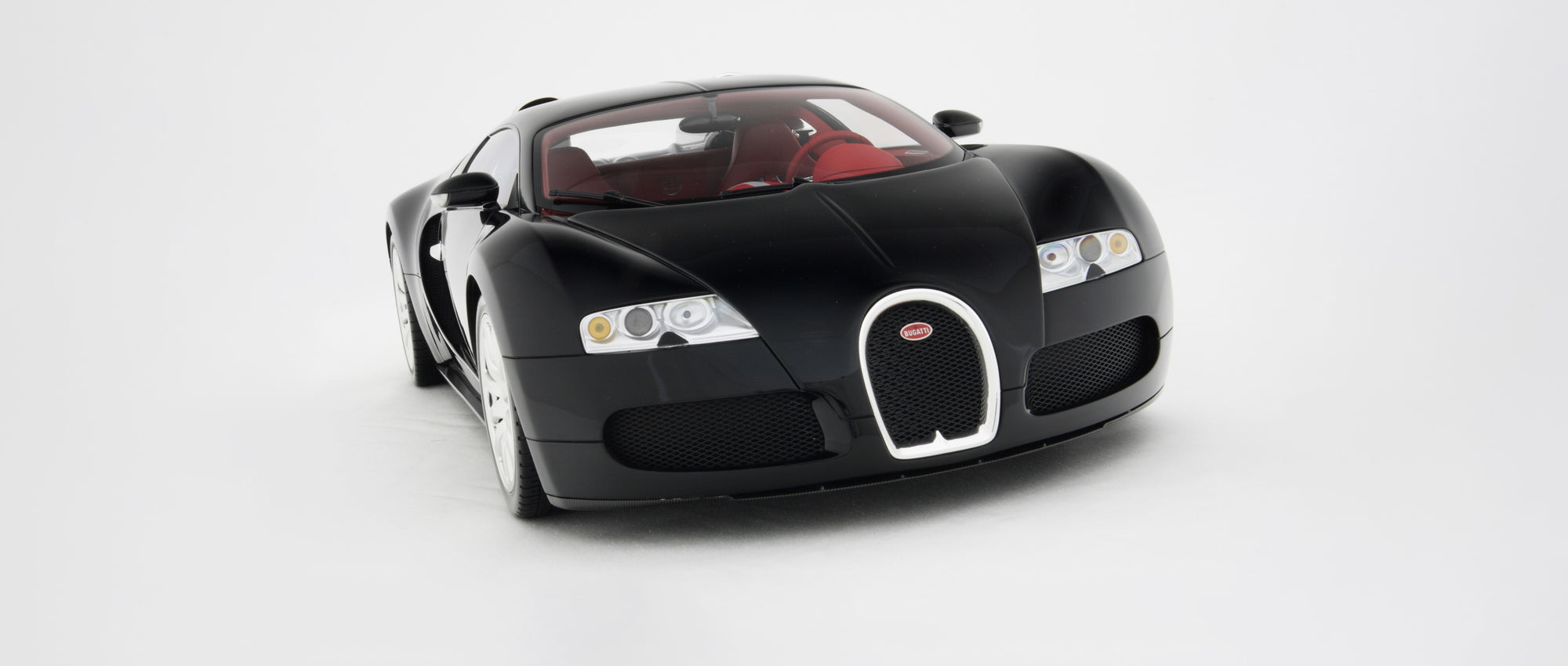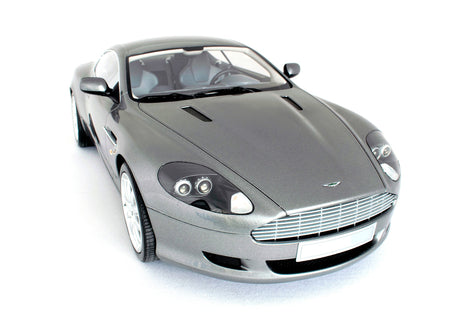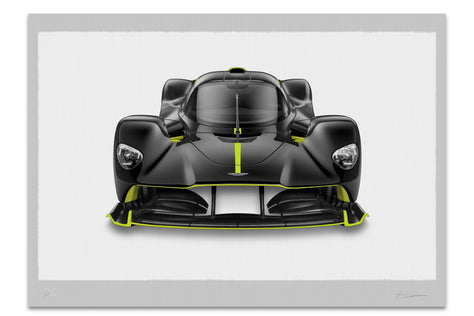技術詳細
- 説明
- スケールガイド
The Bugatti Veyron has a legendary status in the motoring community. Initially a technical experiment for the now Volkswagen-owned Bugatti company, it transformed the motoring landscape forever and rejuvenated the Bugatti brand to no end, turning the supercar into a luxury road car suitable for everyday use. The development is considered one of the greatest technological challenges ever known in the automotive industry. Every single piece of the car was developed from scratch and the engineers at Bugatti worked closely with experts in the aviation and space sectors, industries where materials and systems are routinely subject to extreme speeds and forces. Though the car was setting a new technological benchmark, the design was injected with Bugatti-DNA. The two-tone design created the characteristic side view with the signature Bugatti line. The centre line and horseshoe-shaped radiator grille bridged the gap between the early Bugatti models and the present day. Even the full name, the Bugatti Veyron EB 16.4, was a hark back to the marque’s history: ‘EB’ refers to Bugatti founder Ettore Bugatti and the car is named in honour of Pierre Veyron, a Bugatti development engineer, test driver and company race driver who, with co-driver Jean-Pierre Wimille, won the 1939 24 Hours of Le Mans while behind the wheel of Type 57C Tank.
The Veyron was many production car firsts: the first with over a thousand horsepower, the first with a W16 engine and the first to break the 250mph (402kph) barrier. The car boasted unparalleled statistics which only a handful of manufacturers have matched since. Powered by an eight-litre W16 engine with four turbochargers that developed 1,001bhp and 1,250Nm of torque, the 1,888kg Veyron possesses a power-to-weight ratio of 523bhp per ton and could accelerate to 60mph in 2.5 seconds. This enabled it to reach a top speed of 253mph (407km/h), making it the fastest car in the world – a record it would hold for two years. A later variant of the Bugatti would reclaim the record from the SSC Ultimate Aero TT and keep that record until 2017, another seven years.
Beyond the engine, Bugatti worked in partnership with Michelin to develop the world’s first mass-produced tyre that can withstand speeds in the region of 400km/h and could be used everyday. Together, they developed a new tyre pressure sensor to withstand the 130 kg centrifugal forces placed upon the wheels at top speed. Carbon-ceramic brakes discs were chosen to withstand brake disc surface temperatures of up to 1,000 degrees. In addition, titanium was used for the brake disc hub instead of the usual stainless steel, giving the Veyron by far the strongest braking performance in the automotive and motorsport industry at the time. Bugatti regarded the rear wing to be the most important technical element. At high speed, the wing could flip up to an angle of 55 degrees in less than 0.4 seconds, increasing rear axle downforce, thereby improving the distribution of braking power between the front and rear axles. The airbrake alone caused deceleration of up to 0.6 G and, when combined with the 1.4 G generated by the wheel brakes, the Veyron had ample stopping power.
The Bugatti Veyron is limited to only 99 pieces.
--------------------------------------------------------------
Elevate your 1:8 scale collection with one of our elegant, harmonious and handcrafted display cabinets, stands or plinths.
View Display Cabinets for this model >
We offer a tailor-made service, customising your 1:8 scale model to perfectly match the specification of a real car, enhancing the already stunning features of the limited edition model.
先行予約
特注車
オーダーメイドモデルを作成するには、4つの追加オプションを選択する必要があります。ペイントカラー、インテリアカラー、ホイールスタイル、キャリパーカラー。
フォームに記入してください。営業チームのメンバーからご連絡いたします。
お問い合わせ
このモデルの注文に関する詳細については、お問い合わせください。






